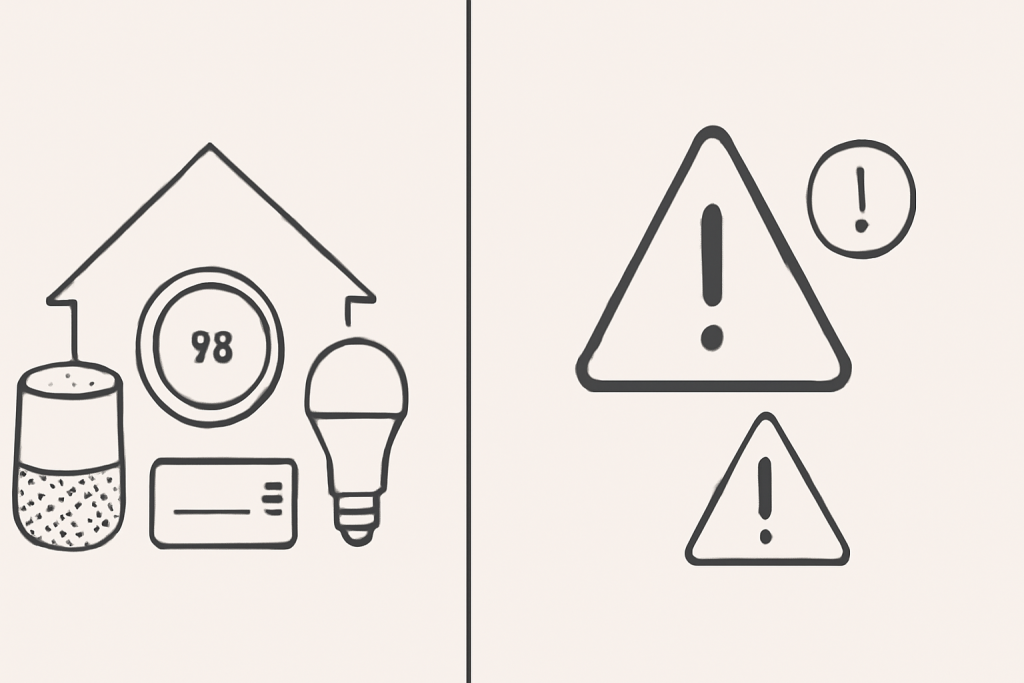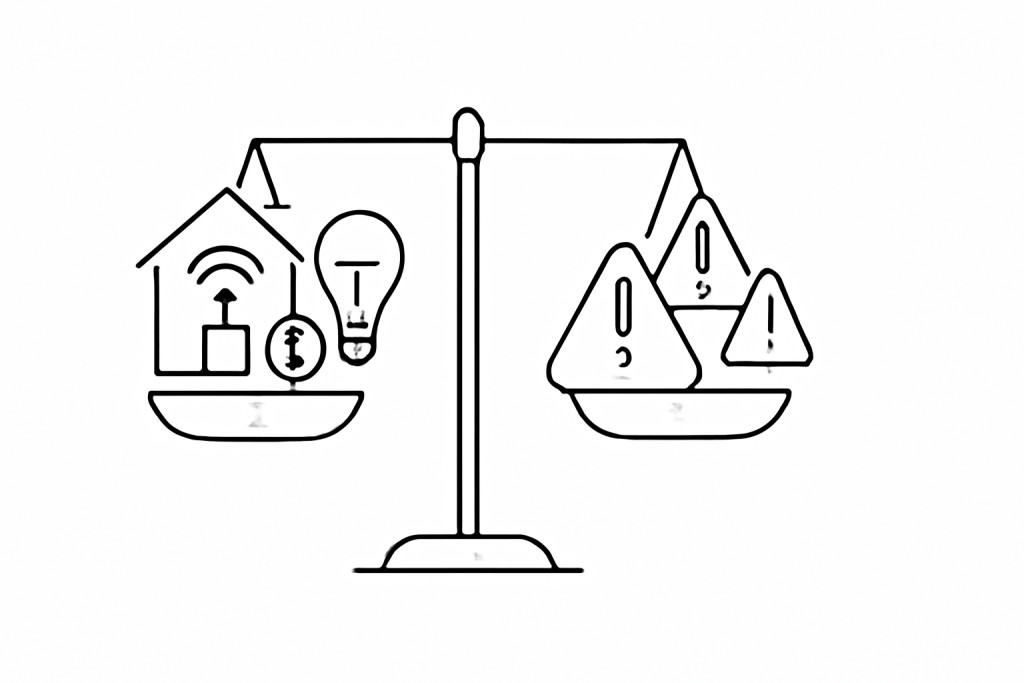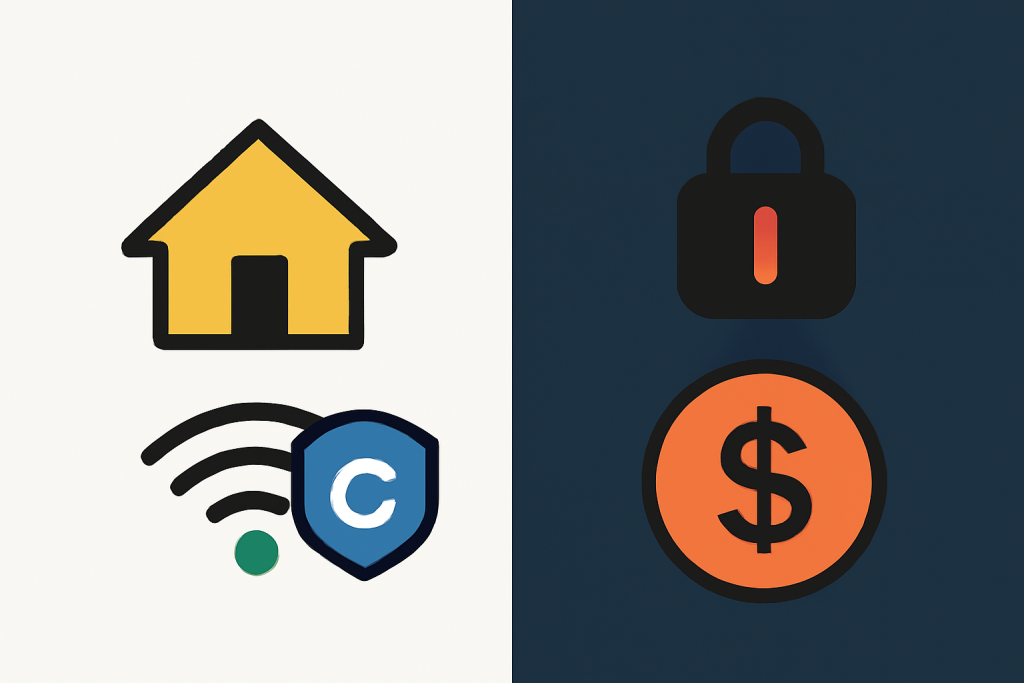Introduction: The Rise of Smart Home Automation
Discover the pros and cons of smart home automation in 2025. This in-depth guide unpacks the real-life benefits, drawbacks, costs, security, and practical tips to help you decide if automating your home is right for you.
2025 is witnessing a bold revolution in home living. Smart home automation has moved beyond luxury, becoming a sought-after solution for everyday convenience, safety, efficiency, and control.
From voice-activated lights and security systems to refrigerators that order groceries, modern smart homes offer features that seemed futuristic a decade ago.
But is smart automation as flawless as it sounds? Like any new technology, it brings both transformative advantages and a fair share of challenges.
If you’re exploring whether to automate your home, this comprehensive guide lays out both sides—helping you make a decision that fits your lifestyle and budget.
What is Smart Home Automation?
Smart home automation involves using internet-connected devices and systems to control appliances, lighting, heating, cooling, security cameras, door locks, and more.
These devices can be managed via smartphones, voice commands, scheduled routines, or even artificial intelligence that anticipates your needs.
- Examples: Smart thermostats that learn your schedule, lights you can dim with your voice, security cameras alerting your phone, or a morning “routine” that opens blinds, starts coffee, and plays the news.
Smart automation can be installed in new construction or retrofitted into existing homes, with options for every price point.
The Pros of Smart Home Automation
1. Convenience You Control
- Control nearly everything—lights, appliances, temperature, music, security—from anywhere in or outside your home, using your phone or voice.
- Set up automated routines (“Good night” shuts off all lights, locks doors, lowers thermostat).
- Remote access is ideal for families, travelers, or anyone who wants instant control.
Example: Forgot to switch off the oven or lights? Just tap your phone from the office or vacation.
2. Energy Efficiency and Cost Savings
- Smart thermostats optimize heating/cooling schedules based on your behavior, reducing wastage and utility bills.
- Automated lighting, plugs, and appliances can be scheduled or triggered by movement—significantly cutting energy costs.
- Energy monitoring features let you pinpoint and reduce high-use areas.
Example: Lights turn off automatically when you leave a room, or AC only runs when needed.
3. Enhanced Home Security
- Smart locks, video doorbells, and cameras provide real-time video surveillance and alerts if there’s movement or an unknown visitor.
- Remotely lock/unlock doors and check footage from your smartphone, wherever you are.
- Motion detectors and smart alarms increase household safety, deterring intruders.
Example: If your smart camera detects movement at night, it can automatically turn on outdoor lights and send you an alert.
4. Accessibility for All
- Voice-controlled systems empower the elderly, people with disabilities, and children to manage their environment independently.
- Automating tasks (doors, lights, cameras) ensures comfort, convenience, and safety for users who might otherwise struggle.
5. Customization and Comfort
- Tailor device settings, lighting scenes, and climate to your exact preferences.
- Create wake-up routines (music, lights, temperature), bedtime wind-downs, or party modes with a single voice command or tap.
- Seasonal flexibility—automate holiday lights, schedule heating for winter, or control fans during summer.
6. Entertainment and Ambience
- Smart speakers and displays allow for multi-room music, movie time settings, and even adjustable “ambiance” lighting or soundscapes.
- Integration with streaming services provides endless entertainment options—hands-free.
7. Real-Time Alerts and Safety Monitoring
- Leak, smoke, and CO detectors can send phone alerts instantly if there’s a problem—even if you’re not home.
- Early warnings help prevent disasters, saving property and lives.
The Cons of Smart Home Automation

1. High Upfront and Ongoing Costs
- Smart devices (bulbs, thermostats, cameras, locks) are more expensive than traditional counterparts.
- Professional installation, integration, and upgrades can increase costs for larger homes or complex systems.
- While entry-level products are affordable, a whole-home automation setup can require a bigger budget.
Consider: Costs may decrease over time, but value depends on how much you use the features.
2. Privacy and Security Risks
- All connected devices can potentially be vulnerable to hacking.
- Personal data, video feeds, and access logs are stored digitally; if not secured, they risk exposure.
- Poor password hygiene, outdated software, or unsecured Wi-Fi networks increase vulnerabilities.
Tip: Always secure your home network with strong passwords, enable two-factor authentication, and keep device firmware updated.
3. Dependency on Internet and Power
- Most smart systems need a reliable internet connection; interruptions can leave equipment inaccessible or nonfunctional.
- Power outages can also disrupt systems, though some devices offer battery backup.
Scenario: In areas with frequent outages or poor connectivity, critical functions could be impacted.
4. Compatibility and Integration Challenges
- Some brands or devices don’t play well together—requiring multiple apps, hubs, or technical know-how.
- “Works with” claims may be limited to certain features or require a steep learning curve.
- The rise of standards like Matter improves compatibility, but not all products are supported yet.
Tip: Research before you buy—choose devices that suit your preferred ecosystem (Apple HomeKit, Alexa, Google Home).
5. Complexity and Learning Curve
- The range of options, apps, settings, and automations can be overwhelming for new users.
- Troubleshooting, automating routines, or updating device firmware may require patience or tech support.
- Non-tech-savvy homeowners may need tutorials or professional help for setup.
6. Ongoing Maintenance and Upgrades
- Devices require regular software and firmware updates.
- Older models may lose support or become incompatible over time, requiring costly replacements.
- Technology advances rapidly—what’s “smart” now could be basic in a few years.
7. Data Collection and Advertising
- Some brands collect usage data to improve service or serve personalized ads.
- It’s important to read privacy policies, adjust data-sharing settings, and understand what information is collected.
Comparison Table: Pros and Cons of Smart Home Automation
| Pros | Cons |
|---|---|
| Convenience and remote access | High initial and upgrade costs |
| Energy savings, lower bills | Privacy and cyber security concerns |
| Improved safety/security | Internet/power outage disruption |
| Accessibility for seniors/disabled | Compatibility, integration difficulties |
| Custom scenes/routines | Learning curve and tech maintenance |
| Real-time alerts for hazards | Device obsolescence, updates needed |
| Entertainment/ambience | Potential for data collection/ads |
Practical Tips for Beginners
- Start Small
Begin with a basic device—like a smart speaker or bulbs—before investing in whole-home automation. Expand as your needs grow and confidence builds. - Research Compatibility
Check that devices support your chosen voice assistant (Alexa, Google Assistant, Apple HomeKit) or integrate under a common platform. - Prioritize Security
Set unique, strong passwords for every device. Use multi-factor authentication and routinely update devices. - Keep a Manual Backup
Know how to operate essential functions (locks, heating, lights) in case your system is offline. - Read Honest Reviews
Look for user-tested feedback and tutorials. Choose reputable brands with good customer support. - Budget Wisely
Factor in not just purchase price, but potential installation, maintenance, and future upgrade costs. - Stay Updated
Monitor software updates and new smart device standards for better functionality and cross-compatibility.
Real-World Scenarios: Benefits and Pitfalls
- Busy Families: Automate lighting, door locks, and alarms for peace of mind, but assign responsibility to ensure everyone’s onboard with schedules and voice commands.
- Travelers: Remote surveillance and control offer comfort when away—but only if systems are secured and have backup.
- Seniors: Hands-free voice controls can increase independence, but initial setup may require assistance.
Conclusion: Should You Embrace Smart Home Automation?

Smart home automation can truly transform your daily life—maximizing comfort, convenience, safety, and even savings. Yet, it comes with costs, privacy risks, and setup challenges that should not be ignored.
For most homeowners in 2025, a balanced approach works best: start with key areas that offer the most immediate benefit, and expand your setup as your needs and confidence grow.
Key Takeaways:
- Evaluate your home, budget, and tech comfort before large investments.
- Put privacy and network security first.
- Choose reliable, compatible devices and learn with simple routines.
- Don’t chase every new feature—pick what fits your unique lifestyle.
Read More : What is a Smart Home? Your 2025 Beginner Guide to Smarter Living.
